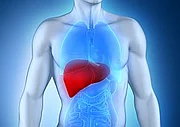
TUESDAY, Nov. 17, 2020 (HealthDay News) -- About one in five Americans waiting for a liver transplant dies before getting the organ. Their odds might be better if more people knew they could donate a portion of their liver in a process called living liver donation.
Doctors at the Mayo Clinic in Rochester, Minn., want to raise awareness of these living liver transplants.
"About 12,000 to 13,000 people are on the liver transplant waiting list, which means about 2,500 people who are on the list each year will either die or become too sick while waiting for a liver transplant," said Dr. Timucin Taner, surgical director of liver transplantation at Mayo.
In a living donor liver transplant, a portion of the healthy person's liver is removed surgically and placed in a person whose liver does not work properly. The liver regenerates in about three to four weeks in both the donor and the recipient. Patients who receive a transplant from a living donor generally have better results.
"The incidence of technical issues during surgery can be somewhat higher for the recipient because it's more difficult to transplant a partial organ. There can be increased risk of bile duct complications and arterial thromboses," said Taner. "But in living donor liver transplantation, the transplant typically occurs before the recipient becomes dangerously ill awaiting transplant, which improves the outcome."
Donors typically are under age 60, must be in good physical health and will undergo blood tests to ensure blood and tissue types are compatible with the recipient.
"It's a significant operation for the donor," Taner said. "Although in the past, it required a larger incision, over the past four years, we've used a hybrid procedure that reduces the size of the incision, which translates into better pain control. The time in hospital is about four to six days, and typically it takes about four to six weeks for donors to have a full recovery."
The number of living donor liver transplants doubled last year, to 6% of all liver transplants nationwide.
The Mayo Clinic's Center for Transplantation and Clinical Regeneration is starting two additional living donor programs, the Living Liver Non-Directed Program and the Liver Paired Donation Program.
"These programs are important in that they will help address the ongoing shortage of organs for people in need of transplants," said Taner. "Until recently, Mayo Clinic only accepted directed living donations, meaning the donated part of the liver is intended for an individual known by the donor. With the Non-Directed Program, we now accept donation from persons who don't have a recipient in mind but want to offer the gift of life to another person."
More information
Visit the American Transplant Foundation for more information on living liver donation.
SOURCE: Mayo Clinic, news release, Nov. 10, 2020
Back

The news stories provided in Health News and our Health-E News Newsletter are a service of the nationally syndicated HealthDay® news and information company. Stories refer to national trends and breaking health news, and are not necessarily indicative of or always supported by our facility and providers. This information is provided for informational and educational purposes only, and is not intended to be a substitute for medical advice, diagnosis, or treatment.






